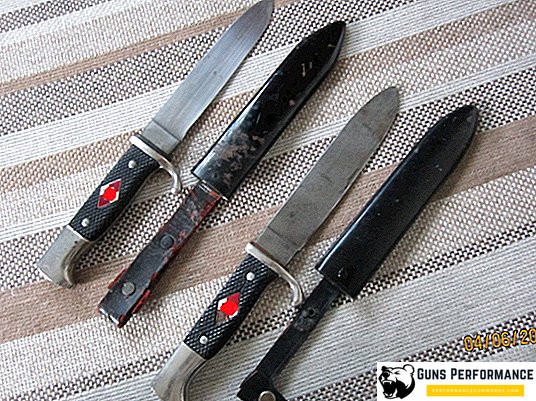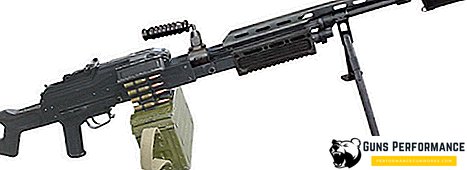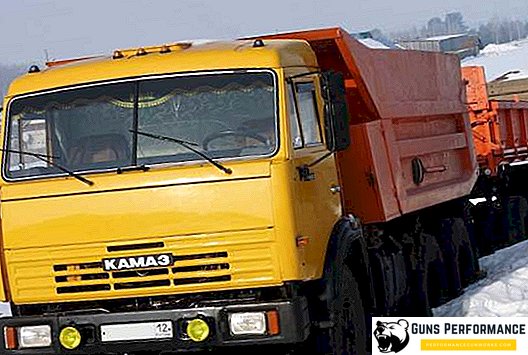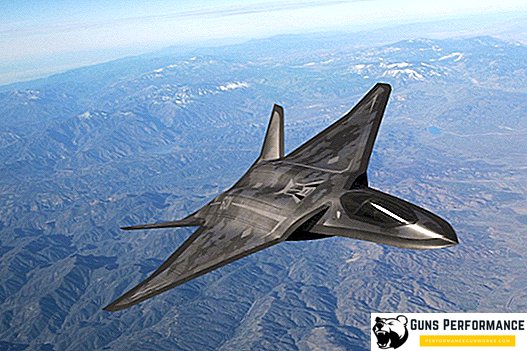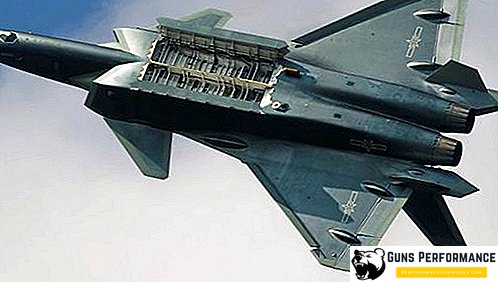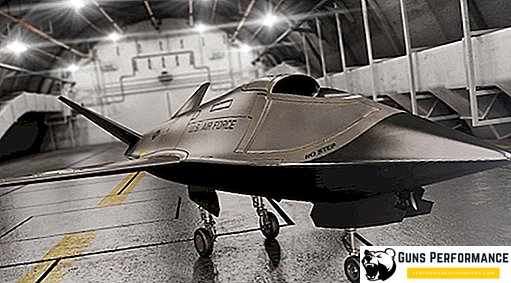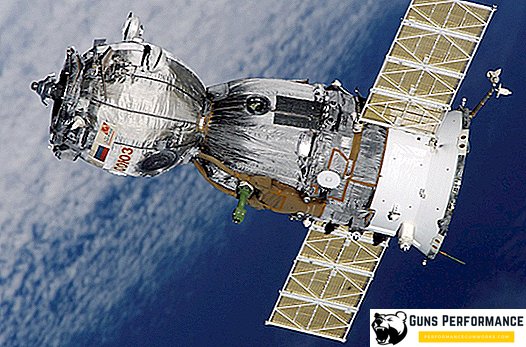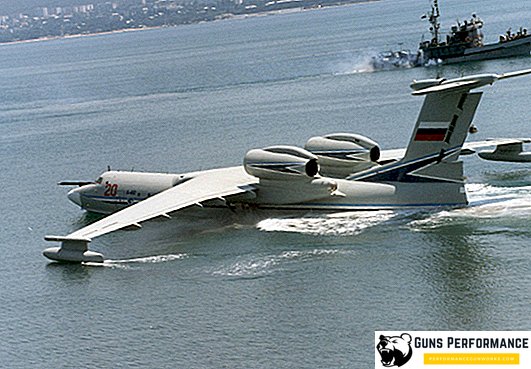According to the results of tests and competition in 1959, the newest offspring of the Kalashnikov design bureau, AKM, was adopted by the Soviet Army. It demonstrated high reliability, accuracy and accuracy when shooting. At the same time, a significant role was played by the fact that the Kalashnikov assault rifle of the previous modification had previously been sufficiently mastered by industry, security forces and military personnel.
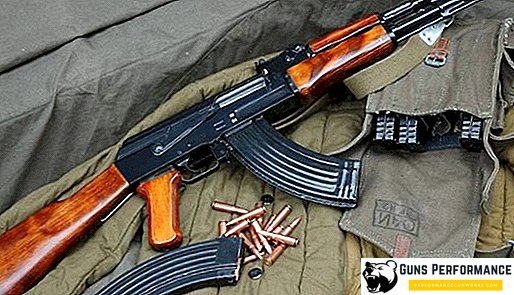
What is left of AK
AKM retained the old AK scheme:
- Automatics;
- Barrel locking system;
- The return mechanism;
- USM AKM with automatic and single fire, as well as a flag manual sector translator-fuse;
- All systems and mechanisms fit into the receiver.
It should be noted that in both products the moving parts of automation have significant gaps. This ensures reliability in its operation, including operation in conditions of considerable pollution, which increase the load on the gas chamber, therefore, holes were made in the gas chamber for the release of powder gases into the AHM.
Improvements in AKM design
Receiver AKM was made using stamping, welding and riveting. This made it possible to reduce the weight of the box and reduce the consumption of metal in the production process by 80%. The strength of the lightweight receiver cover was strengthened with transverse stiffeners.
Improved accuracy of shooting:
- The introduction of a mechanical trigger retarder;
- Increased stability in the horizontal plane in the process of shooting.
The duration of the automatic cycle increased slightly, but increased accuracy. Improved or to some extent changed the details of the firing mechanism, retaining its overall design.
Increased accuracy allowed to increase the sighting range to a thousand meters. True, in a real combat situation, fire is often fired at short distances. For shooting at dusk added fluorescent devices, worn on the rear sight and on the front sight.
Reducing the mass of weapons achieved through changes in technology. Using not steel sheets, but light alloys based on aluminum, reduced the mass of AKM stores. Buildings lightweight shops stepped vyshtampovkami.

Previously used parts made of wood, or rather birch blanks, replaced. Butts AKM began to make of plywood tiles, barrel lining - from glued veneer. Pistol grip made using plastic. Although already in the 1960s, AKM began to be supplied to the troops with plastic butts (made of fiberglass), forend and barrel plates. Plastics are also used today in the manufacture of AKM shop cases.
Blade bayonets replaced the AKM universal bayonet-knife, equipped with a scabbard with rubber pads. AK machine guns, along with SKS self-loading carbines, were completely replaced in the Soviet Army by AKM guns.
Who mastered the main production of AKM
The position of the general manufacturer of AKM in the country was entrusted to Izhevsk Machine Building Plant. The production of the machine proceeded in parallel with the continuous process of improving technical processes in order to minimize costs and improve quality.

Began the widespread introduction of advanced technologies. For example, parts were manufactured with precision castings of the melted models. Produced phosphate lacquer coating parts instead of the same with chemical oxidation. Used powder metallurgy, often used plastics. The channels of the trunks were formed in AKM machines, however, as in AK, with the help of dornirovany.
In the early 1970s, rotary forging was used in the production of trunks. As a result, automata without changing the basic schemes developed and modified as a construction, and materials, and technology. It’s not for nothing that at the very beginning, when mastering the mass production of the Kalashnikov, the experts noted the great potential of the system for improvement.
Features of the Kalashnikov brand
The weapon is well thought out, characterized by relative simplicity and a peculiar elegance of the scheme. Multifunctional parts are widely used, almost perfect finish ensures the highest reliability of the weapon in any circumstances. AKM continues to shoot bursts in bursts when clogged with sand, after swimming in the swamp, and also smeared with mud.
Superbly developed metallurgy of that period, high-quality weapon steel provided the highest quality to the weapon itself. Important is the ease of assembly, disassembly and care of Kalashnikov assault rifles, in this regard, they have formed a global brand, the standard.
World Popularity AKM

Both machines are highly popular throughout the world. They adopted the army more than fifty-five states. These are mainly Asian, African, Middle Eastern, and Latin American countries. In addition, the Kalashnikov assault rifles use the armed forces and police formations in more than a hundred countries, and a half dozen states independently produce their own versions of the Kalashnikov assault rifles.
7.62mm cartridge under AKM
The 7.62mm cartridge of 1943 (7.62 × 39) was developed in the co-creation of designers such as: N. M. Elizarov, P. V. Ryazanov, B. V. Semin, and A. E. Ryabova. In the standard cartridge, equipped with a PS shell bullet, there was a steel core. Cartridges can be blank and training. They also have tracer, armor-piercing-tracer, incendiary options. The 7.62-mm cartridge of 1943, and today produces dozens of companies across the globe.
7.62-mm automatic machines AKMN, AKML, AKMN1, AKMN2, AKMNZ
Automatic AKMN
Advanced AKM submachine guns have a dovetail special plank on the left side of the receiver in order to install backlit and backlit night sights:
- AKMN, having an illuminated sight NSP-2 ("with a night rifle sight of the second sample") and an infrared illuminator;
- AKML - has an unfounded NSP-3 sight ("with a night rifle sight of the third sample");
- The AKMN1 has an NSPU aimless sight ("with a night rifle universal sight");
- AKMN2, which possesses an NSPUM universal inflatable night sight;
- AKMNZ possesses an NSPU-3 inferior universal night sight.
7.62 mm AKMS folding stock
In parallel with the AKM assault rifle, in 1959, the army accepted its modification AKMS. It was intended weapons of the Airborne Forces, as well as units and units of special forces. Its distinguishing feature was the presence of a folding metal butt, the same as that of the AKC.
The folding butt is two stamped thrusts and a folding shoulder rest, as well as a butt clamp, mounted on the left side of the sleeve. In the stowed position, the stops fit under the forearm. This situation does not prevent the holding of weapons and the introduction of aimed fire. All accessories for the care of the machine, unlike AKM, are worn separately.
AKMS ballistic characteristics are similar to AKM properties.
Wooden pistol grip lasted longer on AKMS than on AKM. This happened because at first they could not find materials that could have sufficient strength characteristics for plastic handles that were not protected from mechanical impact when the butts were folded.
TTH AKM

Caliber - 7.62 x 39mm.
Length - 880 mm.
Barrel length - 415 mm.
Weight:
- without a store 2.93 kg;
- with equipped shop 3.60 kg.
Shop - 30 rounds.
The initial speed of the bullet - 715 m / s.
Sighting range - 500 m.
Rate of fire - 600 shots / min.
Combat rate - 100 shots / min.
Instead of conclusion
The design of the spent and highly reliable AKM assault rifle has provided these weapons with a long demand and worldwide fame. AKM was and remains one of the best personal small arms on the planet.


